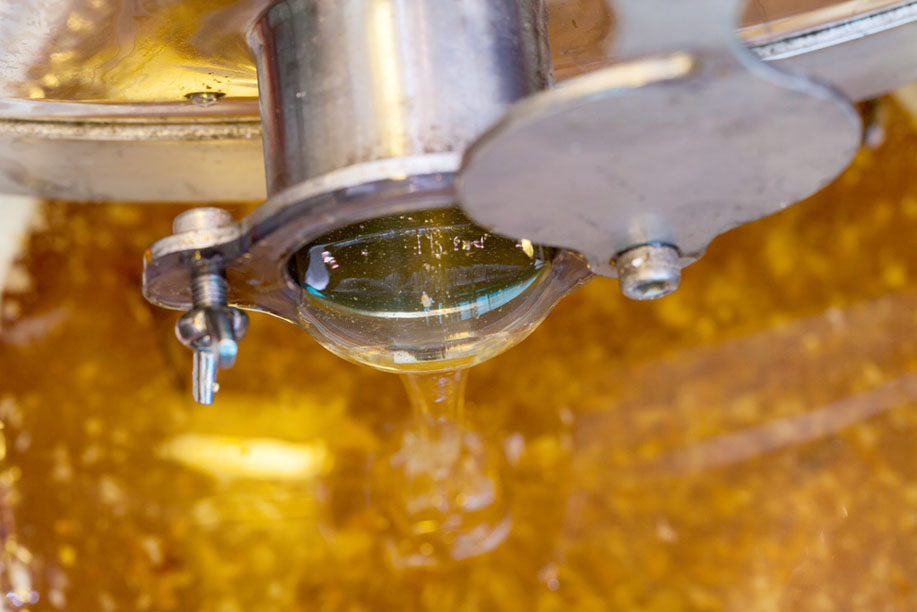We hear a lot of questions about honey filtration. Why is some honey filtered? Is unfiltered honey superior to filtered honey? Is honey somehow less “real” after it has been filtered?
Because so many people have these questions, and there is so much misinformation out there about filtered versus unfiltered honey, we wanted to provide a few facts.
What is filtered honey?
According to USDA Grading Standards for extracted honey, filtered honey is honey that has been filtered to remove all or most of the fine particles, pollen grains, air bubbles, or other materials normally suspended in the honey.
Why is honey filtered?
Honey is filtered to remove extraneous solids that remain after the initial raw processing by the beekeeper. This is done by the honey bottler or packer to address two key consumer demands:
- Many consumers prefer honey that is liquid and stays liquid for a long time. All honey crystallizes eventually. Suspended particles and fine air bubbles in honey contribute to faster crystallization. Filtering helps delay crystallization, helping the honey to remain liquid for a much longer period than if it was unfiltered.
- Many consumers prefer honey to be clear and brilliantly transparent. The presence of fine, suspended material (pollen grains, wax, etc.) and air bubbles results in cloudiness that can detract from the appearance. Filtering is done to create the clear, brilliant product desired by consumers. For the filtered style of honey, USDA Grading Standards for Extracted Honey give higher grades for honey that has good clarity.
What is ultrafiltration?
Various filtration methods are used by the food industry throughout the world. Ultrafiltration, a specific kind of filtration used in the food industry, should not be confused with other filtration methods generally used in the honey industry.
When applied to honey, ultrafiltration involves adding water to honey and filtering it under high pressure at the molecular level, then removing the water. This process is more complex and expensive process than traditional honey filtration and it results in a colorless sweetener product that is not considered “honey” in the U.S.
If your honey comes from a reputable bottler such as Burleson’s it has not been ultrafiltered.
Is filtered honey still real honey?
You might have heard that filtered honey is less desirable than unfiltered honey because it doesn’t contain pollen.
The truth is that honey is made by bees from flower and plant nectars, not from pollen. Filtration removes larger pollen particles from honey – along with wax, bee parts, and other contaminants – but it doesn’t remove the nectar.
The absence of pollen from filtered honey doesn’t make it any less “real” or natural. And it doesn’t reduce any of the proven benefits of consuming honey. Filtration simply makes honey look clearer and extends the time that honey can be stored without crystallization.
For more information on the question of whether the pollen in unfiltered local honey can reduce the symptoms of seasonal allergies, read our post on Local Honey and Allergies.

